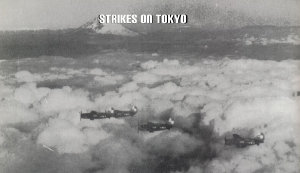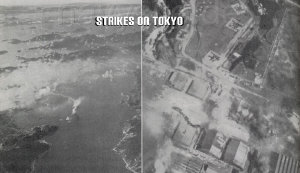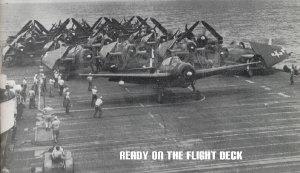NAVY GLADIATOR REUNION GROUP
USS Hornet


USS HORNET was the fourth ESSEX - class aircraft carrier and the eighth ship in the Navy to bear the name. Originally scheduled
to be named KEARSARGE, the ship was renamed after the loss of CV-8. The USS HORNET underwent the SCB-27A modernization
at the New York Naval Shipyard from 1951-1952 and was subsequently redesignated as CVA - 12 on October 1, 1952. Fitted with
an angled deck during her SCB-125 conversion at the Puget Sound Naval Shipyard in 1956, the HORNET underwent another conversion at
this shipyard in 1958 during which she was converted to an antisubmarine warfare aircraft carrier (CVS 12).
Decommissioned on June 26, 1970, the HORNET was stricken from the Navy list on July 25,1989. On April 1993,
the Carrier was sold for scrapping but would be saved by the Aircraft Carrier HORNET Foundation for use as a museum at Alameda, California.
In 1998, the USS HORNET officially became a floating museum at pier 3, Alameda Point, Alameda, California. Click here for a
Photo Tour of the USS HORNET at alameda, California
The USS Hornet (VCS-12) was selected by the Navy as the Prime Recovery Ship for Apollo 11, America’s first lunar landing mission. On July 24, 1969, President Richard Nixon, ADM John S. McCain (CINCPAC) and a number of dignitaries were present while Hornet recovered
astronauts Neil Armstrong, Buss Aldrin and Michael Collins and their spacecraft Columbia. Armstrong and Aldrin were the first
two humans to walk on the moon. Four months later, the USS Hornet repeated this flawless performance for the recovery of Apollo
12, America’s second lunar landing mission.
BOMBER FIGHTER SQUADRON SEVENTEEN VBF-17
The newly established Bomber Fighter Squadron Seventeen (VBF-17), flying the F4U Corsair,
was deployed onboard the USS Hornet from 10 Feb 1945 through 13 Jun 1945 as part of Carrier Air Wing CVG-17. During their deployment
the pilots of VBF-17 participated in the following air strikes logging 125 kills.



16-17 Feb 1945:
18 Feb 1945:
19 Feb 1945:
25-26 Feb 1945:
01 Mar 1945:
23-25 Mar 1945:
27-29 Mar 1945:
31 Mar - 03 Apr 1945:
05-07 Apr 1945:
07
Apr 1945:
13-14 May 1945:
17-22 May 1945:
08 Jun 1945:
Participated in air strikes against targets on Tokyo and Hachijo Jima.
Participated in air strikes against targets on Chichi Jima.
Participated
in air strikes against targets on Iwo Jima and provided air support for the Marine Invasion of the island.
Participated in air strikes
against targets on Tokyo
Participated in air strikes against targets on Okinawa
Participated in air strikes against targets on Kerugma,
Retto and Okinawa
Participated in air strikes against targets on Amami, Okinawa and Kyushu
Participated in air strikes in support of
Okinawa Invasion.
Participated in air strikes against targets on Ryukyus and Kyushu.
Participated in the sinking of Battleship Yamato
and its escorts. Click here for more information
Participated in air strikes against targets on Kyushu.
Participated in air strikes
against targets on Okinawa.
Participated in air strikes against targets on Kyushu.
VBF 17 FIGHTER ACES
The Pilots of Fighter Squadron Seventeen VBF-17 were among the best in the fleet with eight pilots shooting down
five or more enemy aircraft and achieving Fighter "ACE" status.
19 March 1945: Lieutenant Edwin S. Conant was awarded the Silver
Star for his action as flight leader on a fighter sweep over Kure Bay. He shot down three planes during an engagement with the
enemy and his flight group accounted for a total of 24 enemy planes downed with a probability of eight more damaged.
21 March 1945: Lieutenant (JG) Henry E. Mitchell became an Ace when he shot down five Bettys (Japanese Navy Mitsubishi Attack Bombers)
that were part of a sortie attacking the squadron's task force. He was later killed in action on 03 Apr 1945. For his
action on 21 Mar 1945, he was awarded the Navy Cross posthumously.
06 April 1945: Ensign Harold Yeremain became an Ace when he
added three more aircraft to his total by downing two Zekes (Mitsubishi A6M Fighters commonly known as Zeros) and one VAL (an Aichi
Navy Carrier Bomber) during an engagement near Okinawa. Ensigns John J. Gafeney and William J. Kostik were awarded Silver Stars
for their actions in shooting down three Japanese aircraft each during this engagement.
07 April 1945: Lieutenant Byron A Eberts became an Ace when he brought his total to five by shooting down a Francis (a Yokosuka Japanese
Navy Night Fighter).
12 April 1945: Lieutenant Edwin S. Conant became an Ace when he shot down a Zeke (Zero) and a Tojo (a Japanese
Army Nakajima Fighter).
14 April 1945: Ensigns Robert A. Clarke and William J. Kostic became Aces when they each shot down a Zeke (Zero).
16 April 1945: Lieutenant John
M. Johnston became an Ace when he shot down four Zekes (Zeros) bringing his total to eight aircraft. For his action during this
engagement he was awarded the Silver Star.
14 May 1945: The Squadron's Commanding Officer, Lieutenant Commander H.W. Nicholson,
was killed in action during a strike against Kyushu.
14 May 1945: Lieutenant (JG) Carl V. Stone became an Ace when he added two
Franks (Japanese Army Fighters) to his total of downed aircraft.